When you think about search engine optimization, or SEO, your mind probably jumps to keywords and blog posts. That’s a huge part of the puzzle, but what about the pictures and videos on your website? Many small business owners treat them as decorations. They make the site look nice, but they don’t realize these visuals are SEO powerhouses in waiting.
Optimizing your images and videos can bring significant wins for your website’s ranking. It helps search engines like Google understand your content better and improves the experience for your visitors. This post will show you the hidden SEO benefits of visual content. We will provide simple, actionable steps to turn your pictures and videos into valuable assets for your business.
Why Visual Content Matters for SEO
Search engines are smart, but they can’t “see” an image or video like a human can. They rely on text based information to understand what a visual is about. By optimizing your visuals, you give search engines the context they need. This helps them rank your content for relevant searches, bringing more potential customers to your site.
Beyond search engines, high quality, optimized visuals make your website more engaging. People are more likely to stay on a page with compelling images and videos. This longer stay time, known as dwell time, signals to Google that your page is valuable. This can lead to a boost in your search rankings.
The Power of Image Search
Think about how you use Google. Sometimes you switch to the “Images” tab to find what you need. Whether it’s a product, an idea, or a local service, people use image search a lot. If your images are optimized, they can appear in these results. This opens up a whole new way for customers to discover your business.
For example, a local bakery that shares high quality, optimized photos of its custom cakes could show up when someone searches for “birthday cakes near me.” Each image becomes another doorway to your website.
How to Optimize Your Images for SEO
Image optimization sounds technical, but the basics are straightforward. Here are the most important steps you can take to get your images working for your SEO.
Choose the Right File Name
Before you upload an image to your site, look at its file name. A name like IMG_7890.jpg tells you and search engines nothing. Change the file name to describe the image clearly and concisely.
Let’s say you’re a plumber in Dallas and you have a picture of your team fixing a leaky pipe. A good file name would be dallas-plumber-fixing-leaky-pipe.jpg. This is descriptive and includes important keywords. It’s a simple change that makes a big difference.
Use Descriptive Alt Text
Alt text, or alternative text, is the text that displays if an image fails to load. Its main purpose is for screen readers, which help visually impaired users understand the content of an image. However, search engines also use alt text to understand what an image is about.
Your alt text should be a short, accurate description of the image. Think about how you would describe the picture to someone over the phone. For our plumber example, good alt text would be: “Two MoDuet plumbers working together to fix a leaky pipe under a kitchen sink.” It’s descriptive and helpful for both people and search engines.
Compress Your Images
Large image files can slow your website down. Page speed is a critical ranking factor for Google because no one likes waiting for a slow site to load. Before uploading, you should compress your images to reduce their file size without sacrificing too much quality.
There are many free online tools you can use for this, like TinyPNG or Squoosh. These tools can shrink your file sizes significantly, helping your pages load faster and improving your user experience and SEO. A faster site means happier visitors and a better relationship with Google.
Unlocking SEO Value with Video Optimization
Video is one of the most engaging types of content you can create. From product demos to customer testimonials, videos can capture attention like nothing else. Just like images, your videos need some optimization to give you the most SEO benefit.
Host Your Videos Smartly
Uploading videos directly to your website can eat up your server’s resources and slow your site to a crawl. It is almost always better to host your videos on a platform like YouTube or Vimeo and then embed them on your site.
Hosting on YouTube has a special advantage. YouTube is the world’s second largest search engine. By optimizing your video on YouTube, you can attract viewers there and also drive traffic back to your website.
Craft Compelling Titles and Descriptions
The title and description of your video are your best tools for telling search engines what your content is about. Your title should be engaging and include your main keyword. For example, a roofer might use a title like “How to Spot Hail Damage on Your Roof | MoDuet Roofing Tips.”
In the description, you have more room to explain what the video covers. Write a few paragraphs that summarize the video’s content. Include your primary keyword and related secondary keywords naturally. You can also add a link back to the relevant service page on your website to make it easy for viewers to take the next step.
Create a Video Transcript
A video transcript is a complete text version of all the spoken words in your video. Including a transcript on the same page as your embedded video is an SEO goldmine. Search engines can crawl and index all of that text, giving them a deep understanding of your video’s topic.
This extra text is full of keywords and relevant phrases that can help your page rank for a wider variety of searches. Transcripts also make your content accessible to more people, including those who are deaf or hard of hearing, or those who simply prefer to read.
Your Action Plan for Visual SEO
Optimizing your images and videos doesn’t have to be complicated. By focusing on a few key areas, you can unlock hidden SEO wins that help more customers find your business.
Start by reviewing the images on your most important website pages. Are the file names descriptive? Do they have helpful alt text? Are they compressed for speed? Making these small fixes can have a noticeable impact.
For video, start embedding transcripts with your new uploads. When you post a video on YouTube, take a few extra minutes to write a strong title and a detailed description.
Visual content is a powerful part of your digital marketing strategy. By giving it the SEO attention it deserves, you create more opportunities for your business to grow. You improve your website for visitors and make it easier for search engines to recognize you as a valuable resource.
Meta Information
Meta Title: SEO Wins in Image & Video Optimization | MoDuet
Meta Description: Learn how to optimize images and videos for SEO. Our guide gives small business owners simple tips for file names, alt text, and video to improve rankings.
We Want To Talk To You About Your Marketing Goals.
Let’s Supercharge Your Online Growth!












